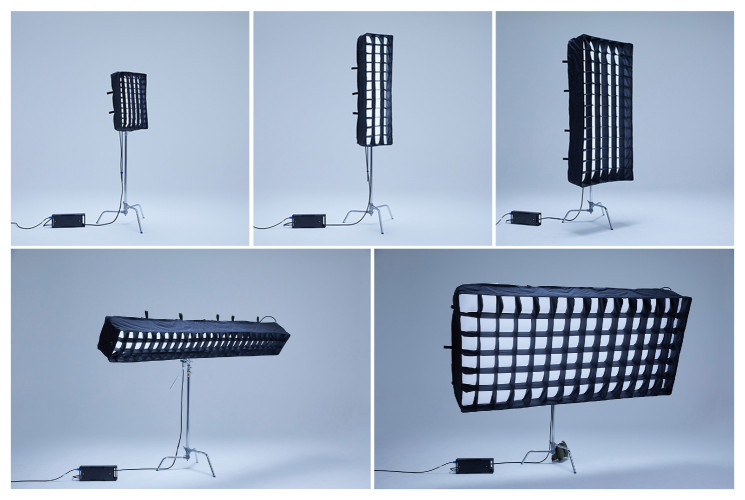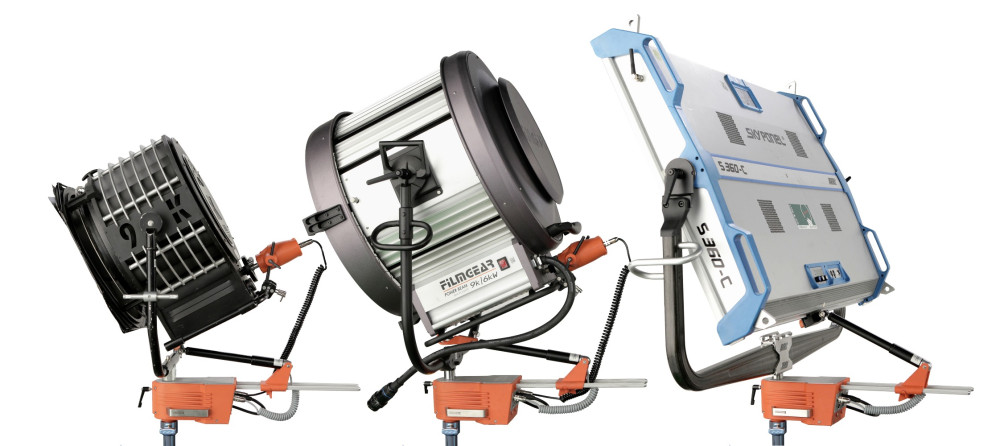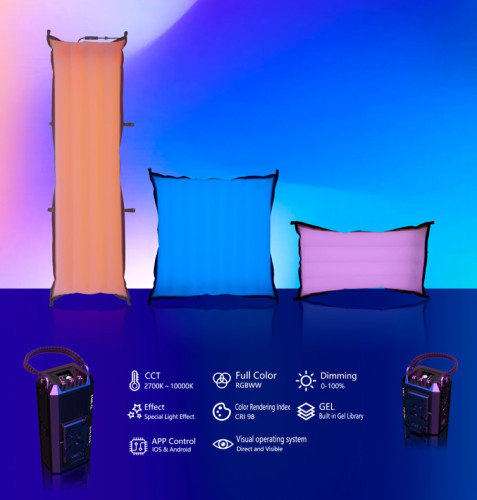by Graham Jaggers Issue 107 - November 2015
Since the phasing out of conventional filament light bulbs and their replacement with fluorescent and LED, many manufacturers indicate the colour accuracy of their lamps with a CRI (Colour Rendering Index) number.
It is possible however, to illuminate a scene using lamps with quite good CRI ratings and experience inaccurate colours on a TV system, despite looking normal to our eyes.
Colour science expert Alan Roberts has developed a different standard for the assessment of lights, which is geared towards illumination for TV cameras. This is becoming the benchmark that manufacturers and TV professionals are turning to in assessing the suitability of a lamp for accurate TV colour rendition. It is known as the Television Lighting Consistency Index (TLCI).
The incandescent light bulb has been with us since the 1840s. Although notoriously inefficient and as good at generating heat as light, it also has some excellent qualities, which have helped it survive so long. One of these is colour. The filament of a light bulb radiates a broad continuous spectrum of light. It is biased towards the red end of the spectrum, but, what we tend to call white tungsten light contains the full spectrum of colours that the human eye can see. Similarly, daylight is biased towards the blue end of the spectrum, but, what we tend to call white daylight contains the full spectrum of colours.
Over millions of years our eyes have evolved into a design that principally utilises red green and blue sensors (cones) that enable us to have good colour vision in daylight conditions.
Colour cameras work to the same concept, utilising red green and blue sensitive sensors to sample the image formed by a lens. Both camera and the human systems rely on the scene being illuminated by full spectrum white light in order to correctly interpret the reflected colours within a scene.
Quite by chance, the filament light bulb has been providing us with camera-friendly illumination that can be colour corrected with a simple white balance, or graded because there is enough colour information in the picture.
Now at last, over a hundred and seventy years after the light bulb was patented, we have a number of more efficient energy saving alternative light sources. Both the motion picture and the domestic home markets are using new generations of fluorescent and LED units to massively cut down on power consumption. Unfortunately, unlike the filament light bulb, these units do not naturally produce a continuous spectrum of visible light. Gas filled fluorescents, and LEDs often have parts of the spectrum missing. (See Fig. 1) If pictures illuminated with such lamps are compared to continuous spectrum lighting, there is a colour shift. (See Fig. 2)
In the picture each coloured panel and the portrait is a split between a daylight exposure and an LED illuminated exposure. The white balance is correct in both, hence the grey scale matches, but the colours vary widely.
It takes complexity in the manufacture of LEDs and fluorescents to get them good enough for use with TV cameras, so there needs to be a means of assessing and categorising their suitability.
Back in the 1960s the system named the Colour Rendering Index was devised for comparing a light source with an ideal or natural light source. The highest possible value was 100 (full spectrum), which would include incandescent lamps and daylight. Fluorescent lights range from about CRI 50 for the basic types, up to about 90 for the best tri-phosphor type. The CRI was developed for domestic and architectural lighting, intended for direct viewing with the human eye. According to Alan Roberts, its colour samples and mathematics are crude by todays standards and it is not really suitable for use with modern television systems. Some light sources with a high CRI score will still not reproduce accurate colours on TV. However, it is the only colour-difference metric approved by the CIE (the standards body for lighting and colour), so CRI values are commonly displayed for products from domestic compact fluorescent bulbs to sophisticated TV lights. The Americans made an attempt to improve on the CRI and developed a system named the Colour Quality Scale (CQS), but it was deemed little improvement and it was not adopted.
Alan thought there should be a more meaningful index, suited to TV. He remembered that there had been some work done at the BBC in the 1970s that proposed to mimic an entire television camera/display channel to analyse the performance of a luminaire relative to a reference. This forms the basis of Alans TLCI system. The highest possible value is still 100, but the scale is stretched at the high quality end to give more discerning results and the calculations more accurately represent a camera system. Trials were held where a number of experienced colourists were given sample material to correct. Lamps of different quality and TLCI value illuminated the samples and the colourists reported how difficult the samples were to colour correct. The result confirmed that the TLCI was an improvement over previous systems and that the scale can be related to the potential difficulty of post-production colour-correction. (See Fig. 3)
Many manufacturers are now getting their lamps tested by Alan Roberts and are adopting TLCI values as an improved way to indicate their spectral quality. Those of us using lamps professionally should be grateful for the determined effort he has made to develop a system that will help us select lamps of appropriate quality for the job.




































